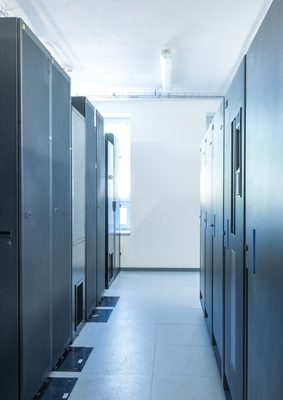
Fans of the hit television show Mr. Robot may be familiar with the Pennsylvania data center called Iron Mountain. That’s because its imposing levels of security served as inspiration for the equivalent data center in the show, “Steel Mountain.” In an example of how the truth can often be stranger than fiction, the real Iron Mountain is a “nuke-proof” facility that lives up to both words in its name. While there is plenty going on of interest behind the burly defenses of this compound, Room 48 is especially fascinating.
What Is Room 48?
If you were to receive access to Room 48, you’d have to travel 22 stories underground to get there. This has nothing to do with security, though. Rather, it’s about function. Iron Mountain uses this experimental area to test the ideal features for optimal data center energy use.
The room is also only accessible for six months out of the year. During this time, a team at this facility will test how to best utilize geothermal conditions, hence its location below the surface. They also study engineering designs that will create the perfect conditions for electronic documents.
While Room 48 could provide all kinds of results, one precise goal is to create a low-cost data center that is still highly efficient. The idea is that this could be done by using geothermal based resources.
Managing Conditions in Inside Room 48
Upon walking into Room 48, you’d probably notice right away that there are no raised floors like the kind you’d expect to find in other data centers. What you would see plenty of is networking wires running above row after row of server racks.
How could these possibly be cooled so far below the Earth’s surface?
Room 48 depends on spiral ducts that are three feet in diameter mounted to the ceiling that ventilate the room. The natural limestone walls also help. Another interesting environmental asset in this room is its access to an underground lake that stretches hundreds of acres. The room’s HVAC system is able to use the cool water to further keep temperatures down.
Okay, but what about lighting? It would be easy enough to hang lights, of course. However, that would also significantly increase the temperature, so Room 48 features a ceiling tube that goes all the way up to the surface to bring in outside light.
The server racks themselves are inside metal containers that keep heat from escaping into the room. This trapped heat is instead forced up via perforated ceiling tiles. The limestone roof has a 55-degree slant and absorbs the heat, so it doesn’t build up inside Room 48’s 4,100 square foot capacity.
The Softer Side of the Underground
Long before Room 48, the tunnels beneath Iron Mountain Data Center were used for mining. Today, “The Underground” as the employees call it is populated by a café, miles of road that employees travel over in golf carts and even its own fire department. Iron Mountain Data Center’s vice president of engineering, Charles Doughty, even has an office down there, one that features leather upholstery and dark wood furniture alongside prehistoric rock. Employees in cubicles sit just outside his office in equally subterranean surroundings.
Although it’s unlikely you’ll ever get a chance to see Room 48 for yourself – or any part of Iron Mountain Data Center, for that matter – the above should give you some idea of what these large facilities are capable of. Far from simply hosting servers for their clients, this much technology in one space can also lead to major breakthroughs in the way we live. For their part, Iron Mountain Data Center may soon find out how to make other data centers far more efficient.